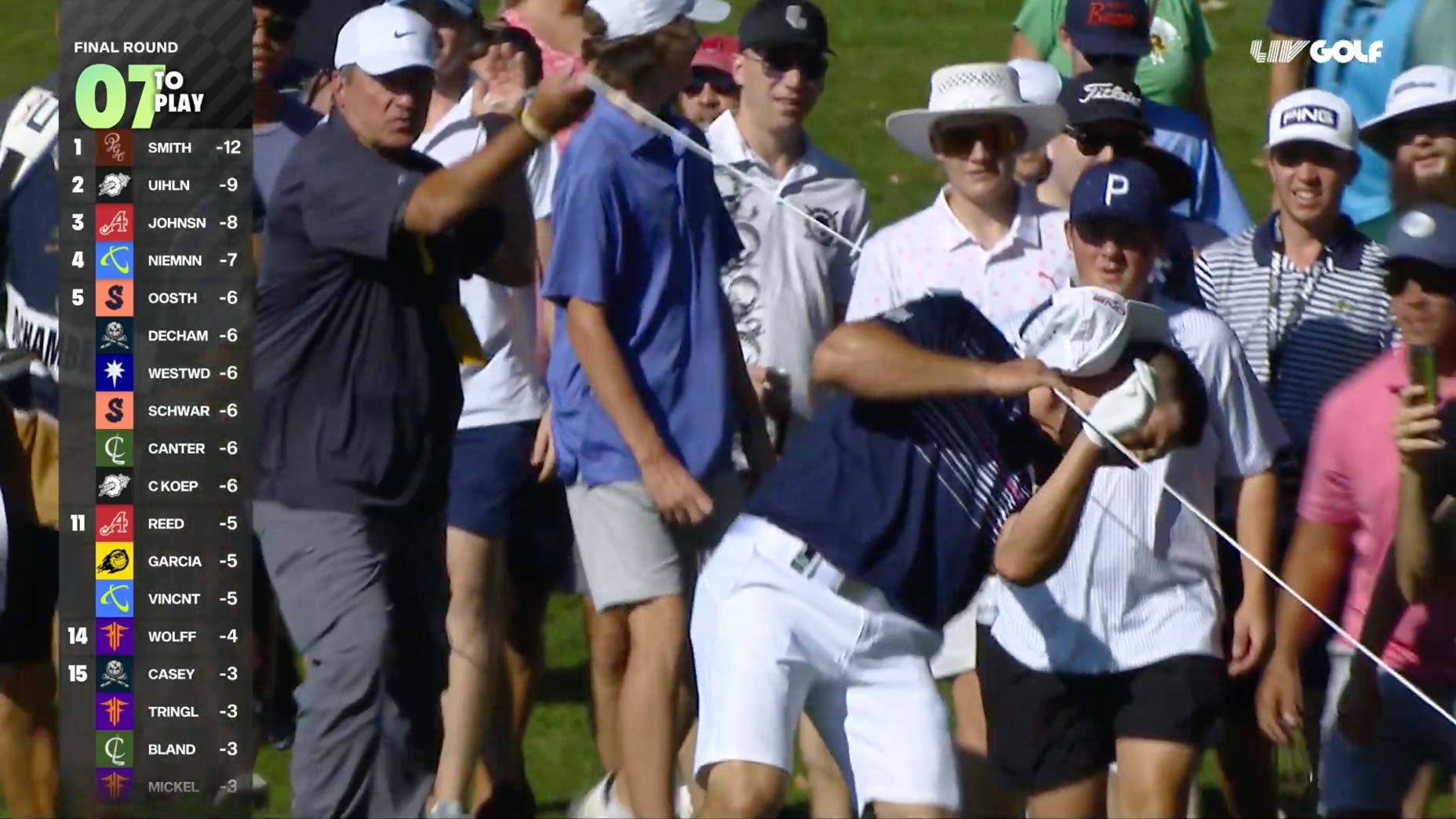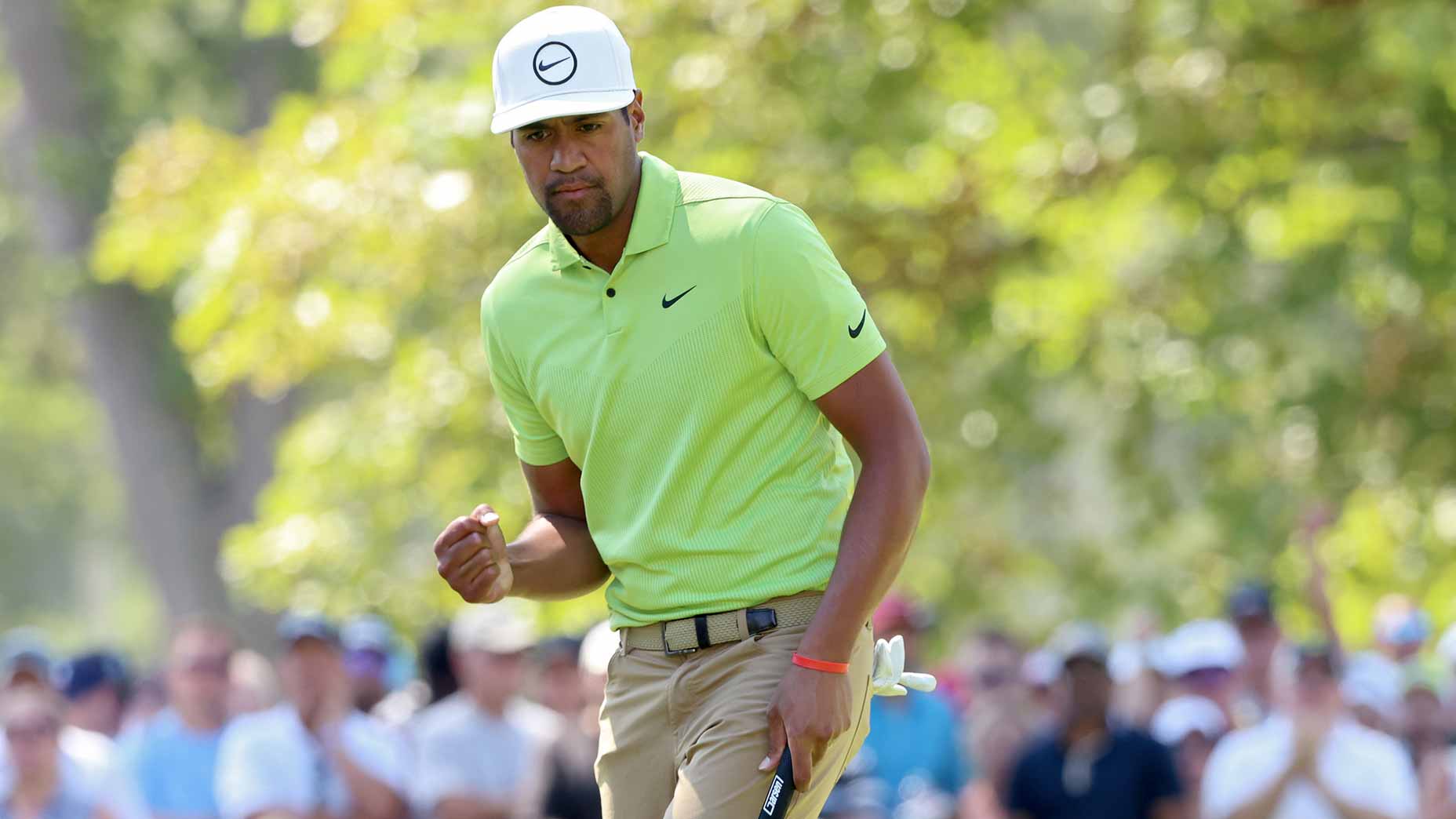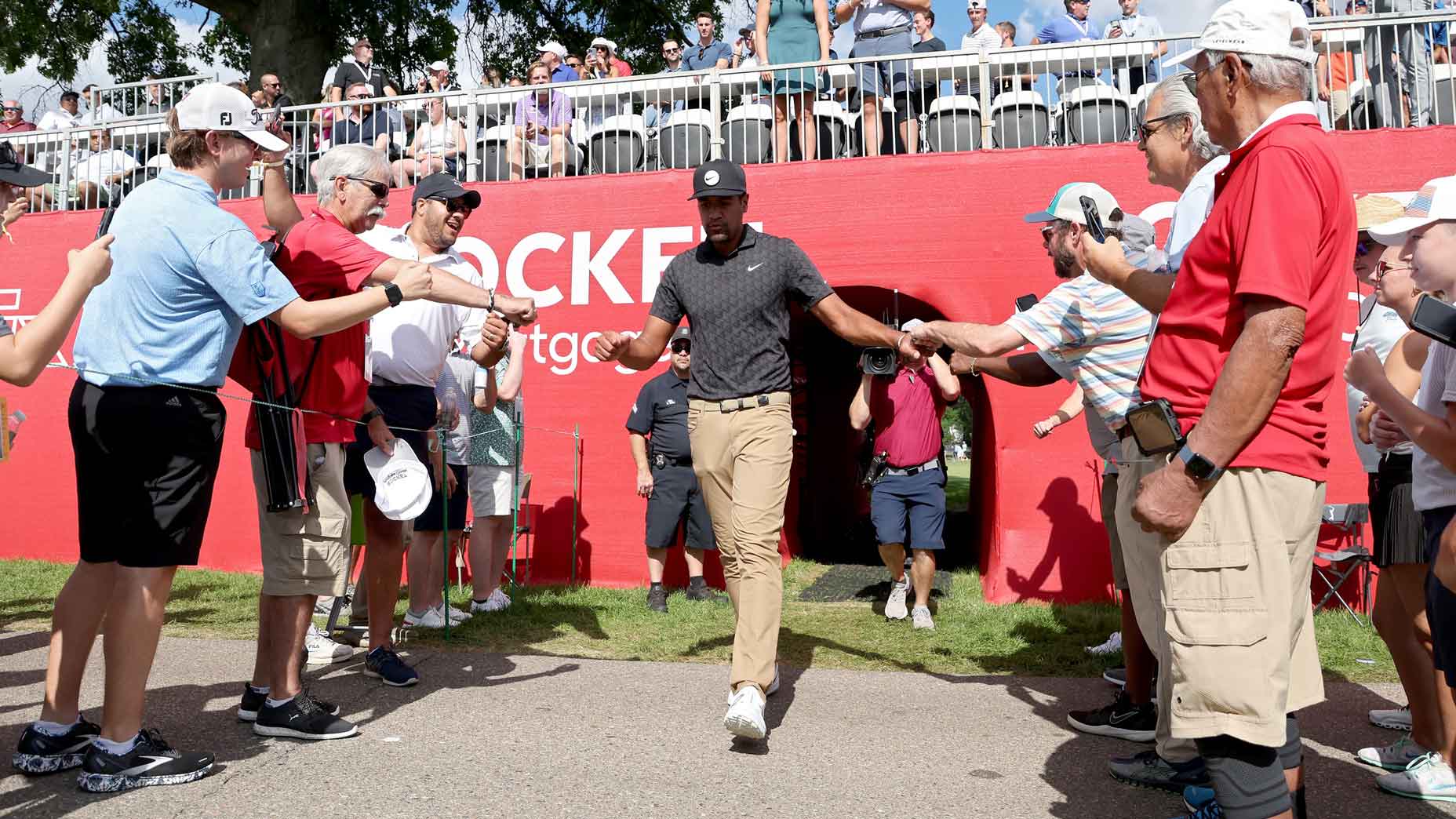While Bryson DeChambeau was dangerous entering the week, it feels official now. He’s won the Rocket Mortgage Classic.
The 26-year-old’s pursuit of extreme distance paid off in victory at Detroit Golf Club, and so well that it’s easy to imagine him neutering similar courses that we see all across the PGA Tour. Courses that test his peers at a significantly higher level than they currently test him. Detroit GC, with trees and rough being its best defense, simply laid down to Bryson’s 350-yard drives. There were 19 of them.
That DeChambeau was below average approaching the green — an anomaly in victory on the Tour — simply didn’t matter. Distance, distance and more distance trumped all. Then the putter topped it off. DeChambeau finished the week first in strokes gained: off the tee and strokes gained: putting. This is his new template: Hit it a mile, use that distance to hit more lofted clubs, hold more greens as a result and if the putter is great, you will very likely win.
What might be most scary is that DeChambeau has seemingly raised his floor. This is what the best players do during their peaks. They keep their bad rounds from losing to par. With what he described as his ‘B’ game on Friday, DeChambeau shot 67. On Sunday, despite airmailing multiple greens with wedges in hand, he still signed for a 65. His template creates enough advantages across the course that the par 72 he’s playing is truly a par 70. For the rest of the Tour — players like Troy Merritt, who was perilously out-driven Sunday — it must be concerning.
Might’ve just witnessed the tipping point in golf. Only time will tell 😂
— Zac Blair (@z_blair) July 5, 2020
As we move forward, holding all things current, there is more Bryson dominance to come. Particular courses will be susceptible to his rash in the same way Detroit Golf Club was and is. It’s not long, its par 5s are all reachable, and its fairways were firm enough that drives routinely rolled out beyond 340 yards. At Detroit GC, there isn’t enough trouble in most of Bryson’s landing zones — for which he playfully mocked designer Donald Ross earlier this week — and there isn’t enough trouble elsewhere. Poor drives, like the one he hit on 17 Sunday, into the rough should theoretically make life difficult for him. But from 231 yards, he grabbed his 8-iron and launched it. He’d end up pin-high with an easy two-putt birdie. Some courses just can’t punch back.
What could this remind you of? On driving statistics alone, DeChambeau’s advantage over most of the field was akin to Tiger Woods’ distance advantage at the 1997 Masters. Woods was the longest player in the field by 23 yards that week, and pretty much perfect for the final 63 holes. DeChambeau was 24 yards longer than the next longest player this week (Matthew Wolff) and putted about as well as he reasonably could. The template is hard to ignore.
Would it succeed at the British Open? Maybe not. But all across the parkland Tour stops of America — Columbus, Ohio, Minneapolis, Memphis, etc. — most of Bryson’s advantages will go just as far as they did this week in Detroit. DeChambeau will take a break next week and return at the Memorial Tournament, where he won two years ago. On the horizon rests the PGA Championship, just four weeks away. Though TPC Harding Park will have shrunk its fairways and bolstered its rough, if he drives it well there, he will find contention at a major for the first time in his career. In the meantime, we will hash it out, praise DeChambeau and question him at the same time. We’ll ask: is it sustainable? A favorable lineup of courses and a clean bill of health make the answer seem obvious.










